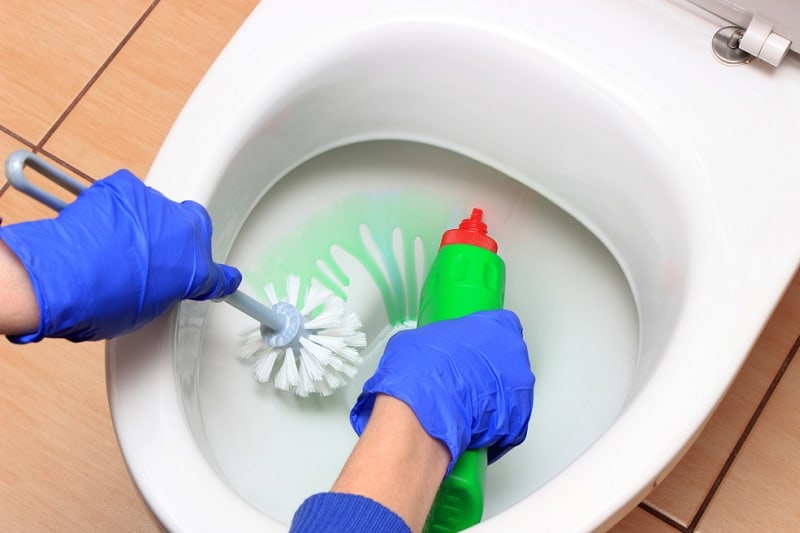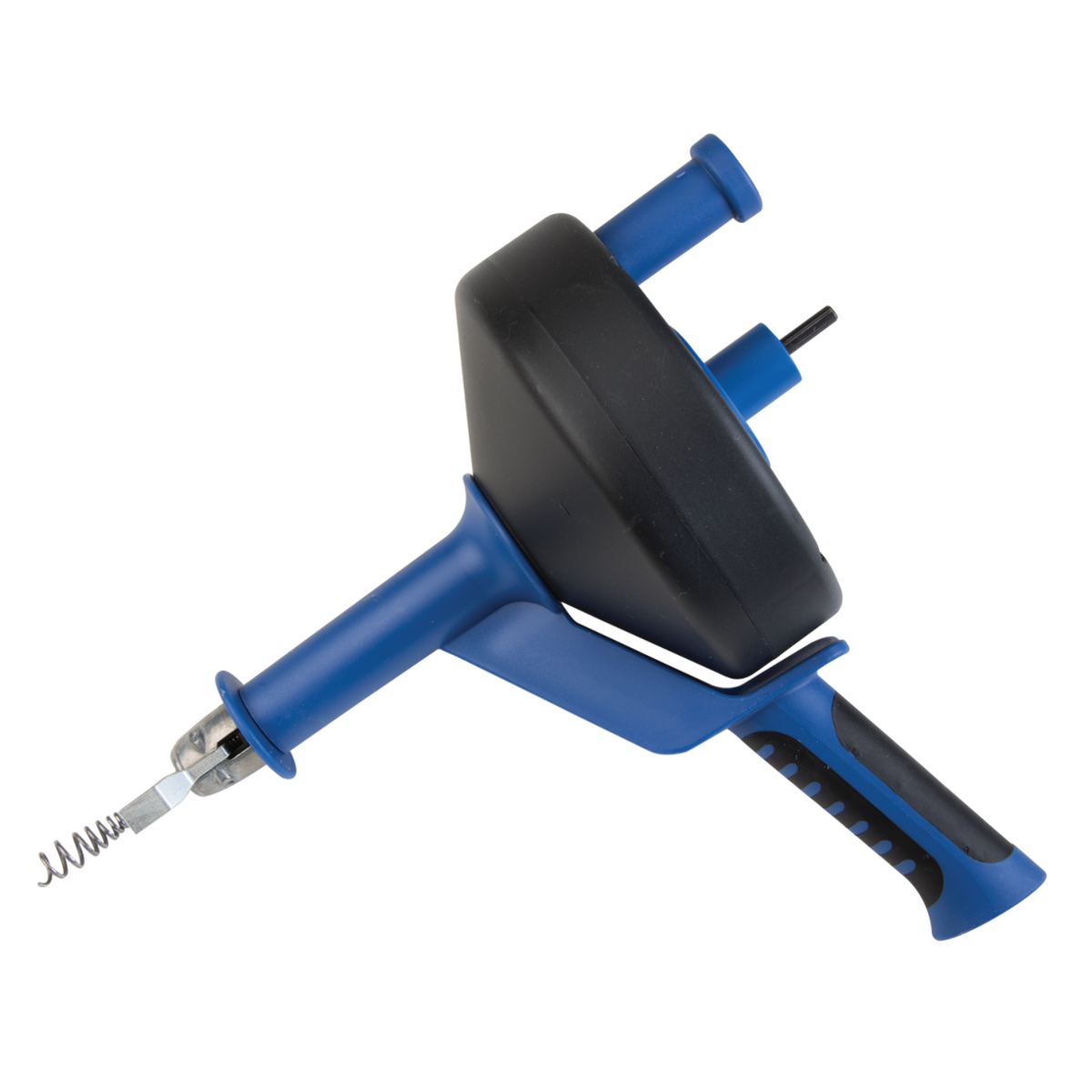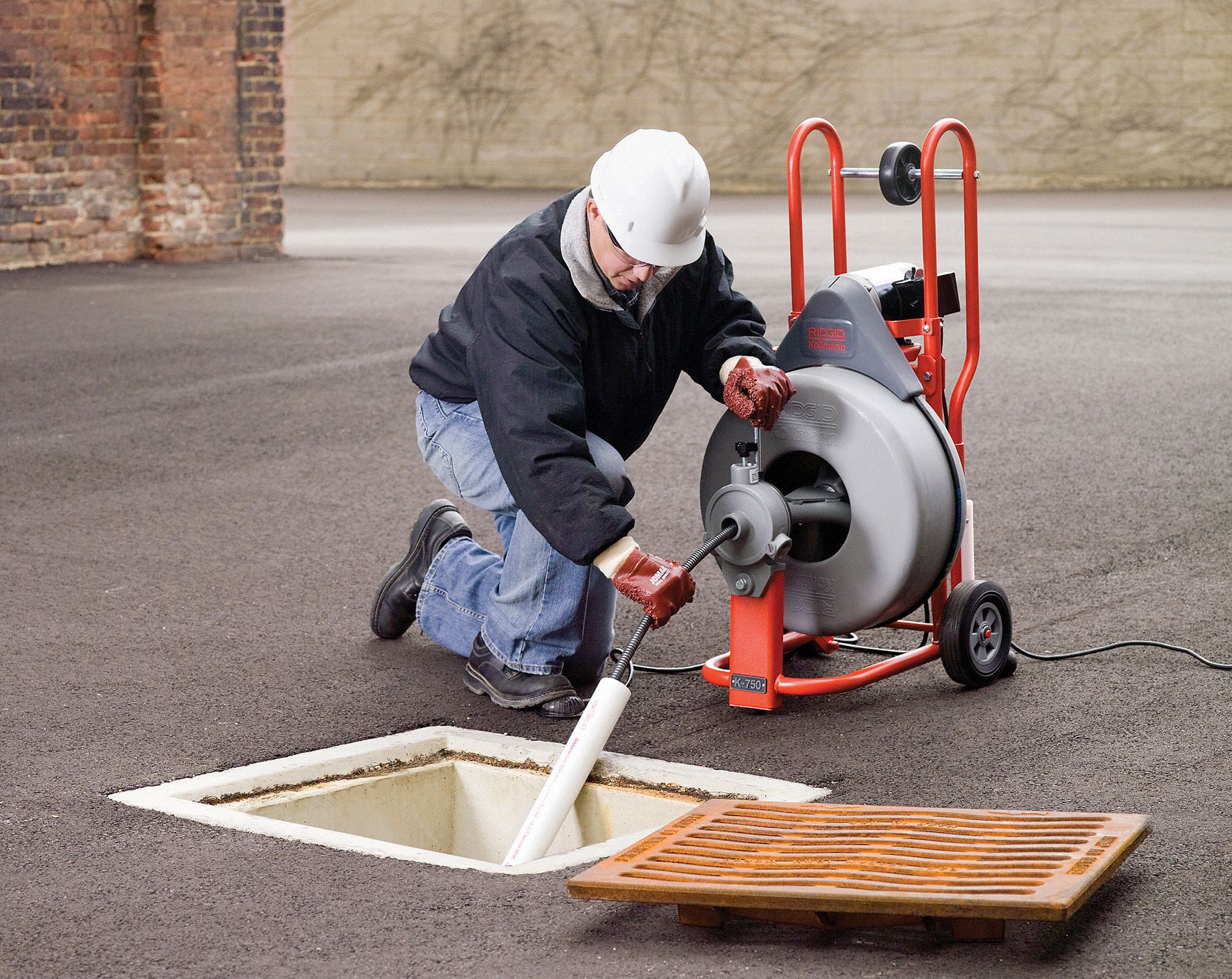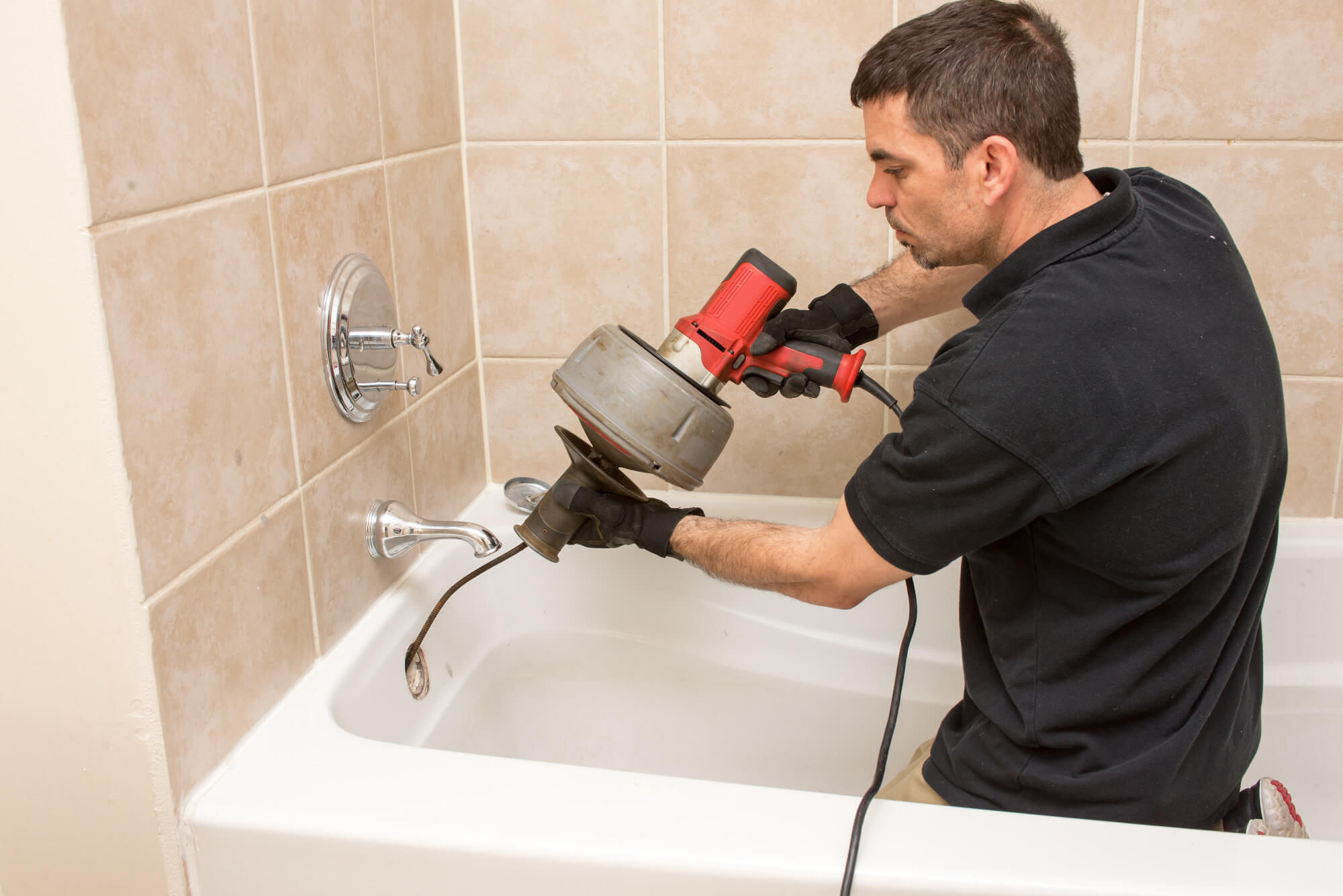There is nothing more relaxing than stepping into a hot shower, whether early in the morning or after a tiring day of work. And then you find that the floor is slightly slippery around the shower drain area and step out to investigate.
You find that the water is draining slower than usual, even with no visible obstacle around or on the drain screen.
And you’re now running late for the priority of your day. What do you do?
Clogged shower drains are a handful to deal with if you think the only option is to call on a professional plumber and have your plumbing checked.
However, there are plenty of home remedies and DIY time-tested hacks to try before you get on the call to the plumber.
In this article, we’ll explore tips and techniques about everything related to clogged shower drains: how to deal with their occurrence and disposal, as well as the benefits of indulging in regular maintenance to prevent such future instances.
How do you know your shower is clogged?
If you’ve dealt with a shower drain clog before, you’ll know just how tiring the process can get. Often, the primary culprit behind clogged showers is the hairs and soap oils accumulating in the tunnel.
So, how do you say that your shower is currently experiencing a clog?
Whenever a shower drains slowly, or you feel a putrid smell coming from the drain valve, you know something is wrong with the draining system. The water is barely draining, if at all. The only way forward is to take action as soon as possible, or the standing water will keep rising, causing issues not visible to the naked eye.
What causes shower drains to clog?
Most often, it is the slow draining water or standing water when you’re done bathing that is the first indicator of a blocked shower drain.
Further, soaps, shampoos, and conditioners are packed with oils and minerals that accumulate in the dark and dingy corners, right inside, but superficially so, in the drainage system.

Some of the primary causes of shower clogs are hair and dirt buildup, soap, minerals, and root growth.
- Hair tends to coil up and bind intangibly with grease from our bodies, forming a hairy and gunky mass that easily serves as a clog.
- When we clean our washrooms, the amount of dirt going down the drain may seem inconsequential. However, it accumulates to amounts that contribute to forming clogs and blocks accompanying hair bundles in the long run.
- Whether hand-made or traditionally made, no matter the soap usually has fat or grease that, when mixed with cold water, tends to form a slimy layer on the floor itself. When this grease enters the shower drain, the hard residue settles down in nooks and crannies and accumulates over time to a large mass, forming a clog.
- Not all minerals present in soaps contribute to forming clogs or blockages. Those that do form insoluble blocks that are challenging to break down using DIY methods at home.
- If your drainage system runs underground, chances are, it may have come in contact with the dense undergrowth of roots. When this happens, the roots press against the drainage pipes causing cracks and thus entering the system seeking a place to grow. While obstructing water flow, the root growth also collects the various soap residues, dirt buildup, and hair, giving rise to stubborn and hard-to-reach clogs that require professional help to remove.
If left alone, the small clogs can lead to bigger clogs leading to damage to the drainage pipes when removed. So, take action as soon as possible, or you’ll find yourself dealing with more than just regular drainage maintenance.
Kitchen Sink Not Draining But Pipes Clear & Not Clogged
What can you do if you think your shower drain is clogged?
More often than not, if you carry out a thorough check of the immediate shower drain surroundings, you’ll be able to pinpoint and fix the issue accordingly.
Clumps of hair gathered on the drain screen usually block water flow, causing slow-draining showers. If hair isn’t the underlying issue, grab a torch, flash it down the drain hole, and see if you can spot the obstruction.
Remove the drain lid if it gets in the way of your investigation.
Also, different households have different types of drains and drain stoppers. So first, check to see if the working mechanism of the drains doesn’t have a mechanical breakdown. Then, manually operate them and check for water flow before using some interesting DIY techniques to unclog your shower drain.
DIY home hacks to unclog the shower drain
Once you’ve determined that there is no other way to resolve the issue, we’ll begin with what you can do, courtesy of the materials present in and around your home. You don’t need to venture far from the comfort of your home to deal with shower drain clogs.
Let’s begin.
Leaping with your bare hands
- Before we start using any tools or materials and ingredients, the first thing to try is pulling out the stubborn clog directly using our hands.
- It is a messy affair and makes you want to gag, but also equally effective in clearing out the shower drain. Open the shower drain lid, and if the hole is big enough for your hand to enter, put on some long rubber gloves and get to work.
- Shine a light into the drain and keep in mind its basic layout. Then, reach as far as comfortable into the shower drain and feel around for the clog. If you know it is a bit deeper, go forth and let your hand reach the clog, grab it firmly, and pull.
- You may have to pry the clog loose, if necessary, by pulling and pushing gently. However, you’re guaranteed to get some result from this method since you’re using your senses to directly fish for the clog than rely on indirect clog removal means.
- Suppose the clog is deeper than you anticipated; in this case, we move on to the next method in line. Remember to dispose of the used gloves and put on a fresh pair if needed.
The classic hot water treatment
- Although a straightforward approach, pouring boiling water down the shower drain directly is an effective way of attacking the stubborn and sticky clog.
- Before you start with this method, a note to remember, if you have a steel-based drainage system installed, there is no tension. However, if it’s all PVC pipes, avoid pouring any hot water or chemicals down the drain.
- For the hot water treatment, boil lots of water, close to 5 liters of water in batches, to pour down the drain. Ensure nothing obstructs the drain opening, and keep your distance if the hole is too small.
- Make your safety the priority before getting the shower drain unclogged.
- The hot water may not affect clumps of hair tangled within the pipes. However, it will dissolve soap residue and fat scum off the clog, clearing up some way for the water to drain a bit better.
- Often, pouring hot water into the shower drain gets used in tandem with another approach for higher unclogging efficiency. Try pouring the water a couple of times, and you’ll certainly see the water draining a bit faster than before, if not by much.
- As a means of preventing future clogging, make it a habit to pour boiling water into the shower drain regularly to keep dirt buildup in the drain pipes clear.

Relying on the trusty plunger
- Most homeowners find themselves in a pickle, trapped in the washroom with a messy situation on hand, sans the plunger. So it’s a sensible idea to place a multi-purpose plunger in some discreet corner of your toilet in case of emergencies.
- When you know your shower has clogged, bring out the plunger and let it get to work. But, again, keep in mind that the effectiveness of the plunger is as good as the distance between the clog and the plunger.
- You can apply some petroleum jelly to the open end of the suction cup to gain a firm grip and keep from slipping under the water’s surface. Once oiled, place the plunger directly over the shower drain opening till the edges of the cup get submerged under the water.
- When in place, begin rocking the plunger back and forth vigorously in succession. Pour in some hot water as a helping guide and try plunging again.
- Using the plunger is a less efficient way of attacking or dissolving the clog from within. However, it is worth mentioning since its use also depends on the drain structure and the nature and size of the clog itself.

Fashioning a clog-fishing hook
- Working your way around the shower drain by hand does not affect removing the clog; fashion a hook to reach farther down.
- All you need for this is a wire hanger, which you’ll have to straighten out. Let one end of the wire be shaped like a hook with which you can prod and poke around in the drain.
- Let the straightened-out wire hanger into the drain opening till you meet the resistance. Then, gently twist the wire around so the hook can get entangled with the hairy gunk in the drain. Finally, pull out the wire and repeat the process if necessary after you feel the hook has twisted around the clog.
- Using a wire hanger may be effective on clumps of entangled hair, but not when the clog builds minerals and fats. So let’s move on to the next method in line if this doesn’t seem to be working out for you.

Home ingredients to the rescue
- We all know the convenience of having some tough drain-clearing chemicals handy when a clog strikes. However, the instant results only make using the chemicals feasible in the long run.
- Although, why resort to chemical torture on the drainage system when you have natural alternatives, equally effective, lying around your house?
- Do you remember making a homemade volcano with just two ingredients and a bit of red color? The fizzy reaction and then lava flowing onto the nearby villages?
- Baking soda and vinegar are two ingredients available in your home that you can use without worries as they are gentle on your drainage system. You take a cup of baking soda and pour it into the shower drain opening for this to work.
- Wait for the powder to settle down and then follow up with a cup of vinegar. The fizzy reaction is instant. Give some time for the mixture to work its magic on the clog and loosen it up.
- When a good half an hour has passed, pour boiling water down the drain and check to see the water flow. If you see a bit of better drainage, repeat the process to clear out the clog little by little.
Try out the Plumber’s snake
- The Plumber’s snake is industrially known as the Electric Eel owing to its mechanism and structure. Many homeowners revert to using this tool whenever their drainage system encounters a clog. They call it ‘snaking the drain‘.
- Let the flexible metal cable down into the drain opening till it hits the clog. Then, carefully push the cable a bit further down, so the cable end tangles up with the clog. Then, crank the tool to bring up the cable, and hopefully, it brings the stubborn clog along with itself.
- Follow up with a brisk deluge of hot water and check for ideal draining.
- An electric auger/snake works the same way. Additionally, it would help if you had a power drill to accompany the snake and guide the metal cable into the drain.
How To Use A Power Drain Auger?
Renting out a dry/wet vacuum
- A dry/wet vacuum is a powerful tool available at hardware stores for rent. They help to unclog drains no matter the depth and nature of the clog. The suction power works wonders on dry debris and liquid matters, acting like a plunger and cleaner in one.
- All you need to do is place a suitable liquid filter on the hose opening and change the settings to liquid vacuuming. Place the drain hose as close or as deep in the drain opening as possible, and then switch it on.
- The vacuum does its work, efficiently bringing up the dirt, hair, debris, and liquid slush, clearing out your blocked shower drain.
The final resort
No matter the method you’ve tried so far, the clog is just as stubborn. In addition, the amount of pressure created by plunging and adding hot water to the drain is not enough if the clog in your shower drain is quite old.
The only way left is to melt away the majority of the clog and wash it away with boiling water follow up. This calls for chemical drain cleaners.
Before starting this technique, put on protective clothing, rubber boots, rubber gloves, and goggles to keep your skin from exposing to the acid.
Whatever the instructions on the label, follow them closely to obtain efficient results. Look around to see if the windows are open to avoid suffocating on the fumes. Also, remember that there will be considerable damage to the drainage pipes when the chemical gets flushed or poured down the shower drain.
Bleach is another commonly used chemical to free up the clogs from the drains. However, professional plumbers do not recommend the mild sanitizing effect on the pipes when the clog in question is a stubborn one.
The best way to avoid using such chemicals is to follow strict preventive measures and carry out regular drainage cleaning with gentle ingredients and boiling water treatment.
Is it time to call the professionals?
As an avid traveler, you may visit your home less often and thus, may not be aware of the gradual grime and debris buildup in your drainage pipes. When the issue pops up out of the blue, you feel a quick-fix DIY hack is enough to deal with the consequences.
However, you may not even be aware of the extent of the blockage and clog in your drains and how that has, in turn, affected the other household drainage systems.
Seeing black gunk appear around your drains is a clear indicator of sewage blockage. A few mild symptoms of a clogged drain include:
- Reduced/slow drainage.
- Regular standing water puddles in the sink and washrooms.
- A typical putrid odor emanates from the drains in and around your home.
If you prefer having the situation sorted out with the first attempt, your best bet is to call for professional aid. And often, the clog can get situated out of reach, a little deeper where conventional home hacks have no effect.
In such times, let the certified plumbers handle the mess and carry out the necessary cleaning and maintenance while fixing any current leakage issues at reasonable costs.
Prevention is better than cure: Tips to avoid future shower clogs.
Natural home ingredients, like baking soda and vinegar, in particular, serve as regular and gentle cleaners for your drainage pipes. They aren’t as potent on the drainage but do well to keep the scum and goop away from sticking and forming thick obstructive layers.
The fizzy reaction between the acid and base results in a sudden pressure that agitates the clog, forcing it to loosen up a bit. The added downpour of boiling water then cleans away the loose grime, keeping your drainage pipes considerably unclogged.

Carrying out this natural maintenance at least twice a month ensures the shower, kitchen, and toilet drains remain unclogged no matter the season. Of course, taking preventative measures to keep food debris and leftovers, soap chunks, and such from entering the drain should get followed strictly if you wish to invest lightly in maintenance.
A few more helpful tips are as follows:
- Brush your hair every time before you step in to take a shower.
- Always keep a fine drain screen on the drain opening to prevent soap pieces, hair, and other matter from entering.
- Make a habit of regularly pouring hot water down the drain to keep the pipes free from liquid grime and sludge formation that ultimately leads to forming stubborn clogs.
- Avoid pouring dirty mop water in the bathrooms since it is convenient. Use the toilet bowl instead or dump it in the backyard.
Frequently Asked Questions
Does it have to be white vinegar, or does brown vinegar work the same?
- Vinegar gets used primarily for its acidic properties. The amount of acid concentration of vinegar determines the intensity of the reaction with baking soda.
- It does not matter which vinegar; just ensure the acidic content is perfect for unclogging drains and not damaging them.
My shower drains slowly. What should I do?
- If your issue is nothing but a slow draining shower, you can start by manually picking away visible hair and other debris from the drain lid.
- Next, use a plunger to dislodge the gunk from inside. Anyone from our guide above will do the trick if these methods don’t work.
Is it normal for black stuff to come out from my shower drain?
- No, it isn’t. Black stuff coming from your drains implies utter sewage blockage, which requires immediate professional attention, or you risk losing your good health to rising sewage.
- The putrid smell coming from the drains should have been your first sign of blocked sewage.









